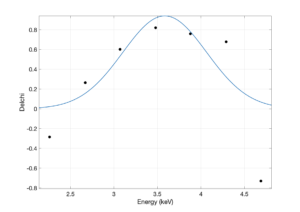

My CV
My Academic Tree: I’m a descendant of the discoverer of X-rays!
Possible detection of the Dark Matter sterile neutrino decay


I came to UMBC in 1999 with a mandate to start an astronomy program. I was founding director of the NASA/UMBC center called the Joint Center for Astrophysics. After 6 years, there were 18 researchers in the Center, with a budget of 6 million dollars. Initially, the NASA/UMBC researchers were entirely in high energy astrophysics. I spent 3 years laying the groundwork for the collaboration with UMD that would become the expanded CSST. The UMBC telescope was delivered several months after I arrived and with the help of my post-doc, we got that up and running. It was subsequently used for open houses. I set up an astronomy minor, consisting of four astronomy electives as well as a year-long survey course in astrophysics for graduate students. The telescope was also used by students in the astronomy minor.
My personal research involves the formation of large scale structure in the Universe: galaxy clusters, superclusters, and filaments. Structure formation involves energetic collisions of massive objects that produce a ~100 million Kelvin plasma as well as relativistic protons and electrons. These in turn produce a characteristic X-ray signature that I use to study the physics of structure formation. Recent work has been in the area of galaxy evolution in groups and clusters, cosmic ray acceleration in galaxy cluster mergers, and the discovery of a new class of objects called Dark X-ray Galaxies.
I am editing a special issue on “High Energy Emission from Clusters, Groups, and Filaments: Current Observations and Future Prospects” in the journal, Universe. Submissions and inquiries are welcome. Follow the link for more information.
https://www.mdpi.com/journal/universe/special_issues/47ZTL2P249
